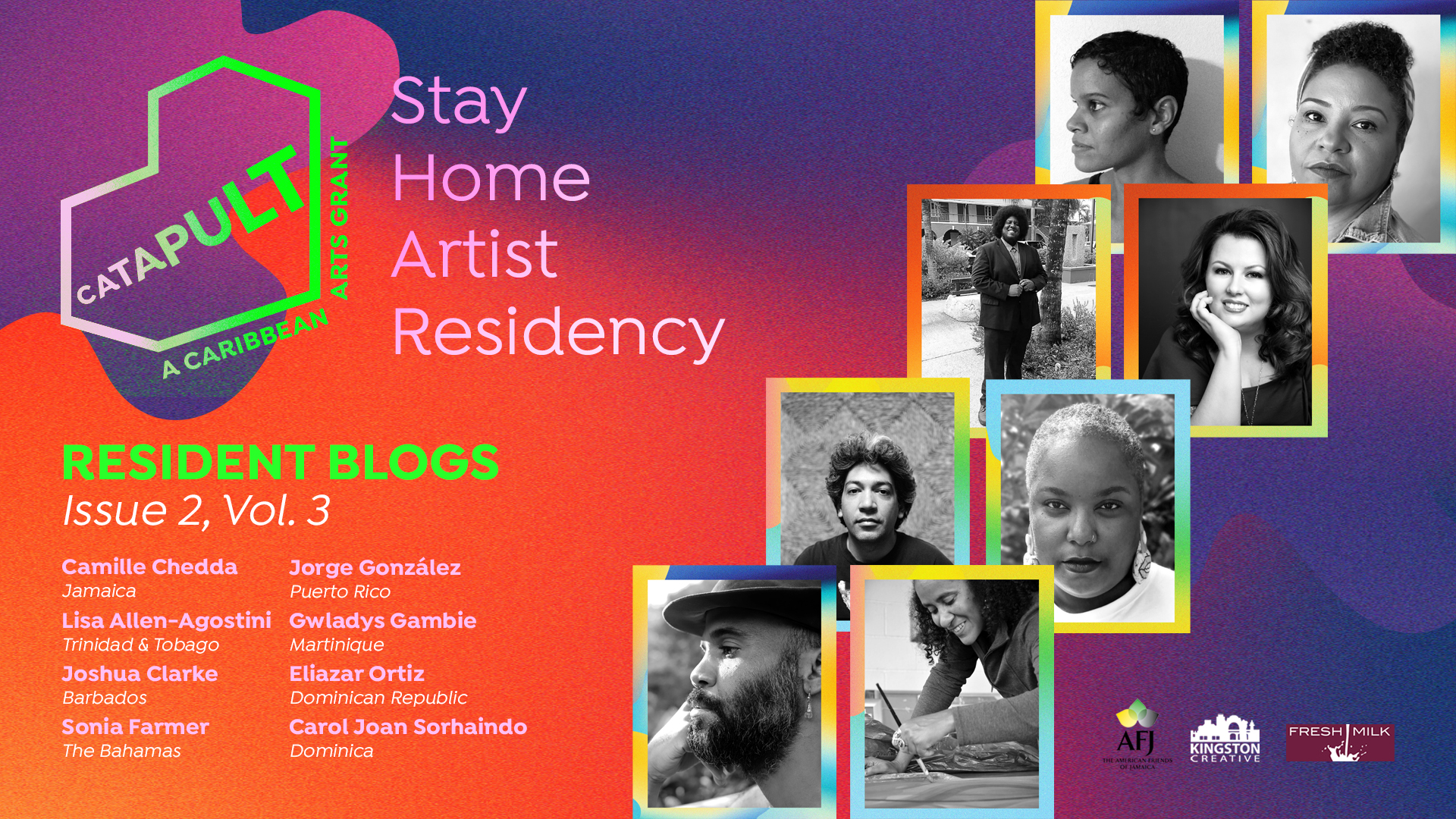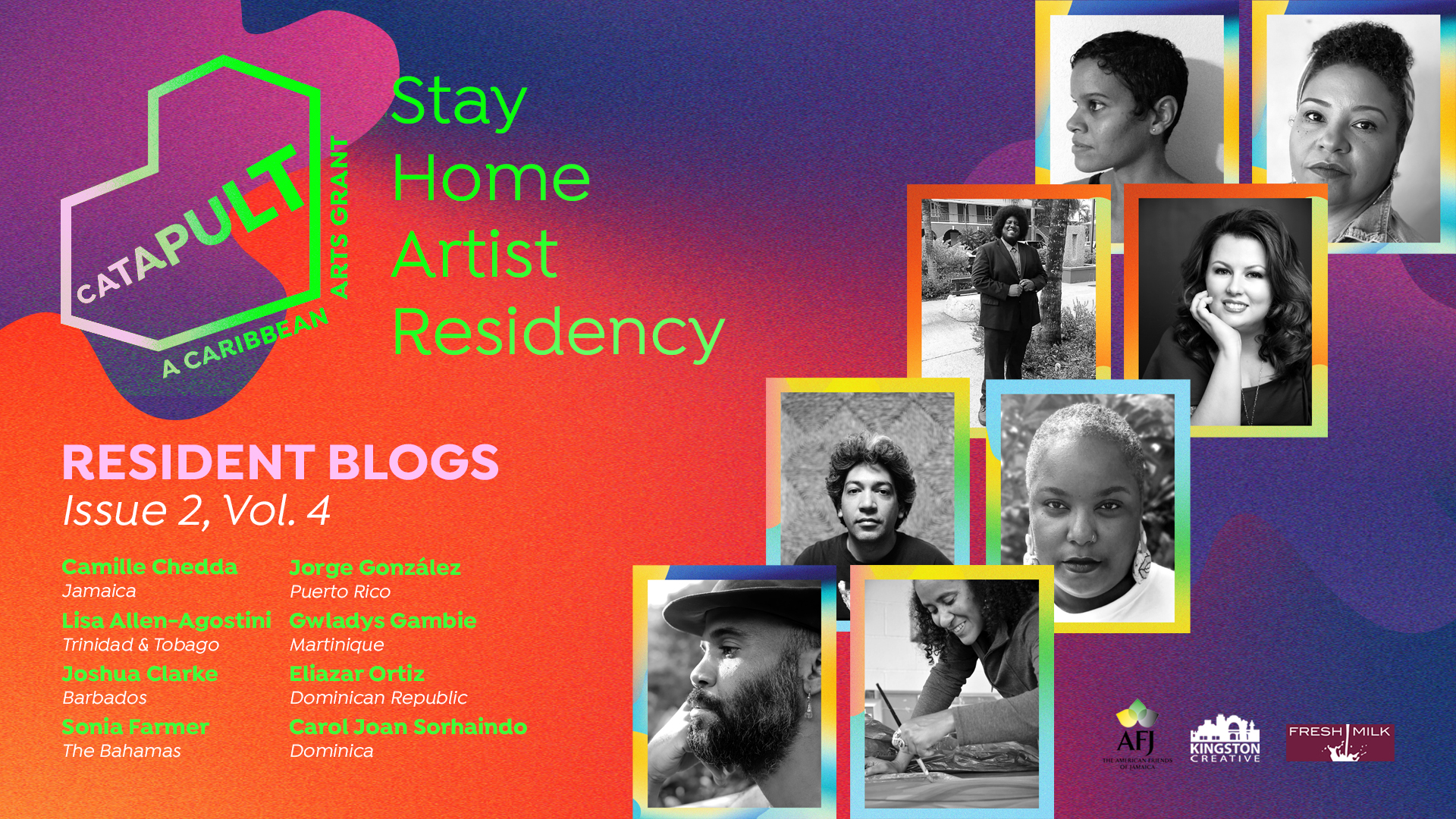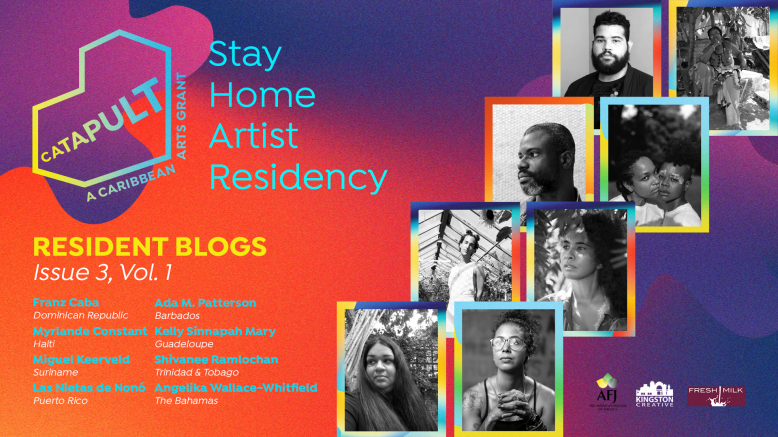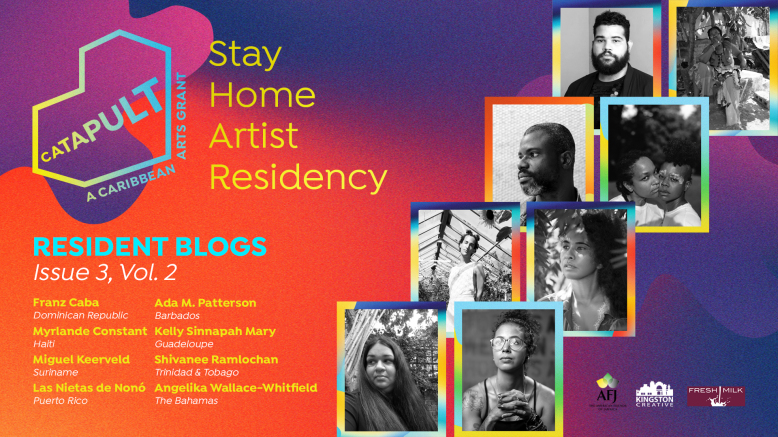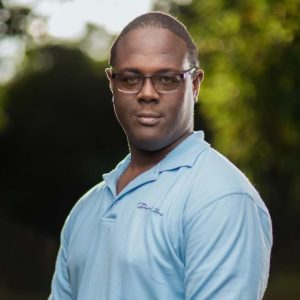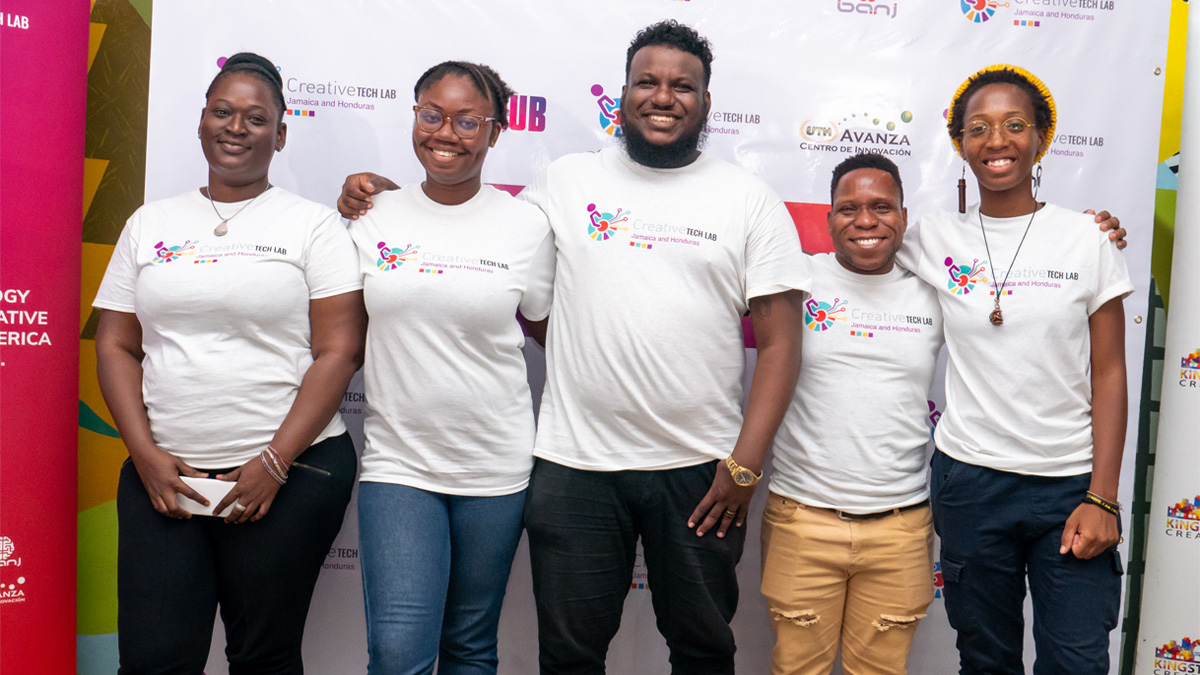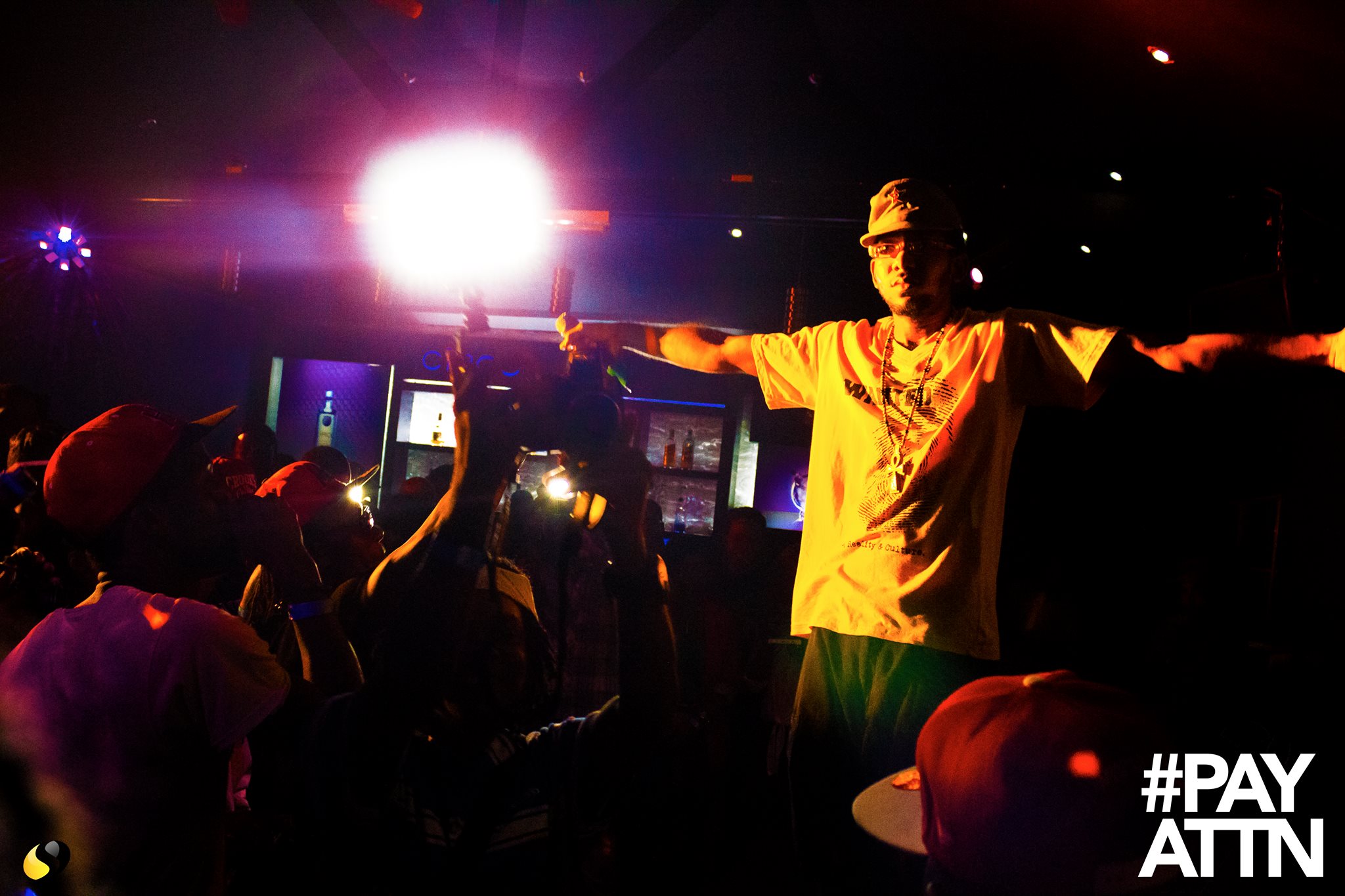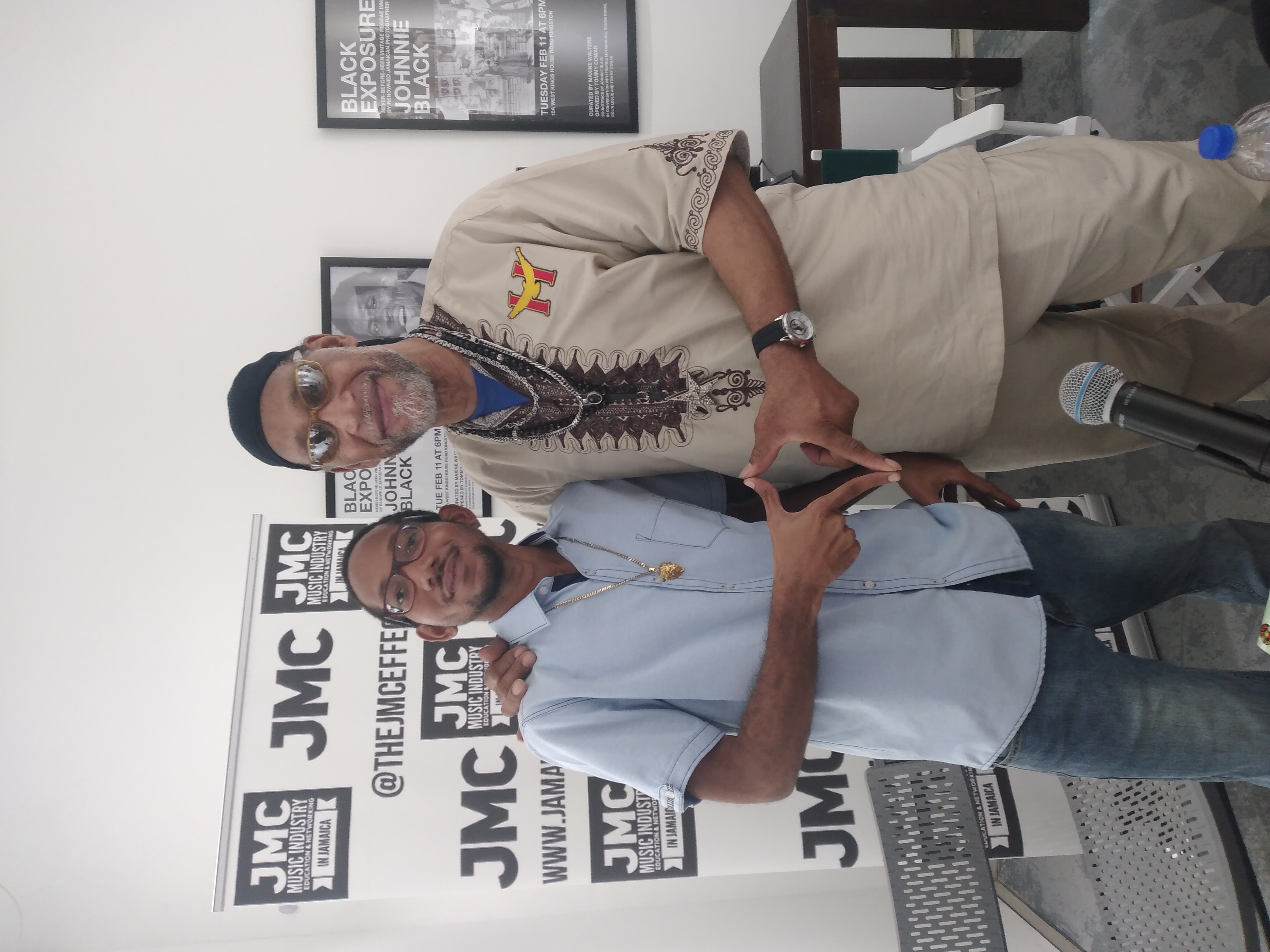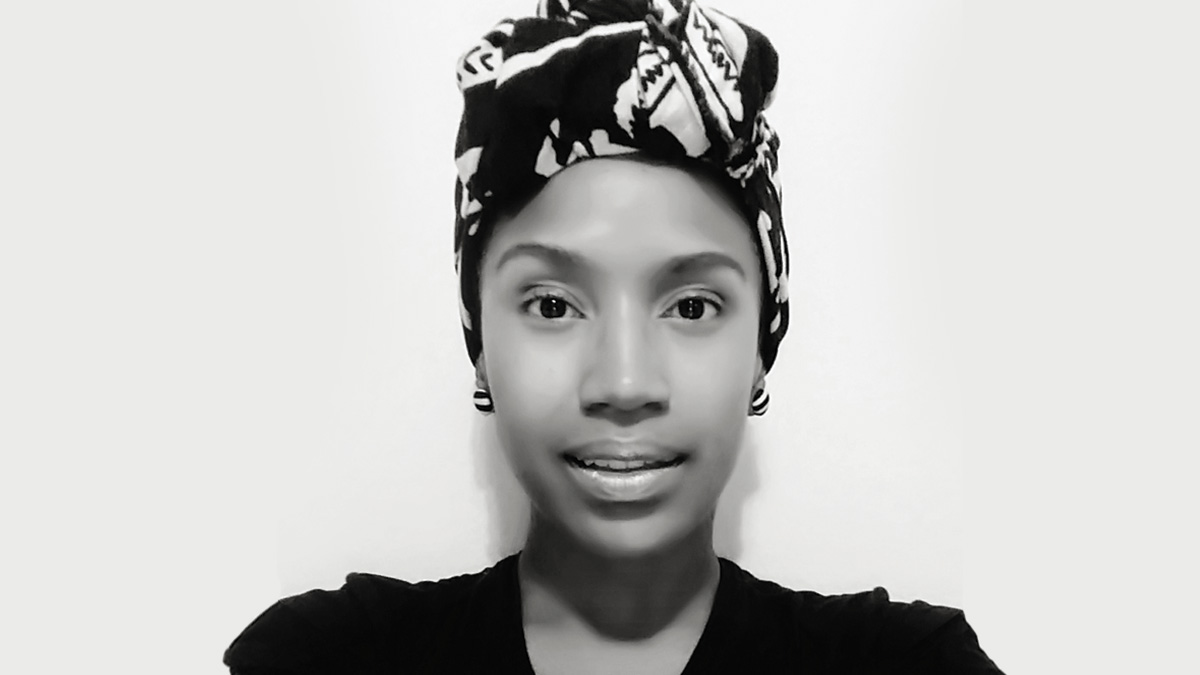Category: Blog_Post
All blog posts
Covid-19 kicked me out my comfort zone…#CovidEffects
Covid-19 kicked me out my comfort zone
For years, I have been delving in the visual arts as a photographer, exploring and now specializing in multiple genres in the art of photography. At no point in time have I ever considered venturing into the world videography. While my camera is quite capable of recording video, I have never felt the urge or the need to explore the video features of the device.
Earlier this year, I lost my eldest aunt. As Covid-19 cases started to rise here in Jamaica, the government taking the needed steps to try and curb the import and spread of the virus, took the decision to close our borders. This meant that family members overseas would not be able to attend the funeral. Coupled with the restrictions on public gatherings, friends and family here would also miss the funeral.
With just about 3 weeks to go before the funeral I got the idea that I should try and learn to record and edit videos so I would be able to record the funeral and provide an avenue for closure for those who would be unavoidably absent. I hit up YouTube University and started consuming content around videography. Learning what shutter speeds I needed to record at, matching shutter speed with the particular frame rate per second of the final video, ensuring that I stuck to native ISOs. I even learned specific video features related to the camera I use and how to manually control audio levels to ensure consistent audio quality. Being informed that for good audio quality, the camera’s built-in microphone wasn’t going to cut it, my friend Christopher over at Learn Share Photo Video recommended a budget microphone, the TAKSTAR SGC-598. I quickly jumped over to Amazon and placed the order and I managed to get it a week before the funeral.
Time to test if I’ve learned anything
Armed with the knowledge I gathered in the short time and the new tool, I used the days of the grave digging to get my practice in for the main event. Things were making sense and just as I would execute on a photographic session, I adjusted to changing scenes and lighting conditions. I did encounter the challenge of keeping the camera perfectly level and avoiding jerky movements while operating the camera handheld, as well as manually racking focus on subjects, but I did my best to compensate.
On the day of the funeral, mentally I had a workflow down and ready to try and execute as best as I could considering my beginner status. However the day was not without newbie mistakes. Firstly, I ended up leaving the house without my tripod so I had to record the entire funeral hand-held. I think I gained some muscle at the end of the day, trying to hold the camera steady enough to simulate being on a tripod. My second newbie hiccup occurred close to the end where I missed a few minutes of footage. My camera has a time limit on a single recording of 20 minutes. On one instance the 20 minutes ran out and I was there in the motion recording and not realizing that recording had actually stopped *facepalm*. Luckily it wasn’t a critical moment or else I’d be so upset at myself.
Putting the piece all together
Now that I had the footage, it was time to learn how to piece it all together and make a final production. What software did I choose to edit the videos you might ask? I decided to try out version 16 of the non-linear editor (NLE) DaVinci Resolve. From what I gathered at the time it was the industry standard for cinematic color grading of video footage. Without getting too techie with it, as that’s a part of my other life, it’s a feature packed application offered by BlackMagic Design FREE of charge and rivals the likes of Adobe’s Premiere Pro and Apple’s Final Cut Pro. There are a few advanced features excluded from the free version that hardcore video editors would need. These are offered in the paid version of the product, DaVinci Resolve Studio.

DaVinci Resolve Splash Screen
I began learning how to review and cut footage, lining them up on a timeline, adding transitions between each cut and adding and syncing videos using their audio signatures. Producing video is really a time consuming task. While I can do a 1 hour shoot and cull through the session images and pick out the best ones that I will end up retouching in just a few minutes, it’s not the same with video. If you record 1 hour worth of video you will have to watch that 1 hour footage to determine what needs to be kept. Just imagine a full production. Imagine a wedding videographer or cinematographer who has covered a full wedding from getting ready to reception. That’s at least 8 hours of footage that they would need to review and post-produce. Whew! I had about 3 hours of footage that I had to review to make my final video.
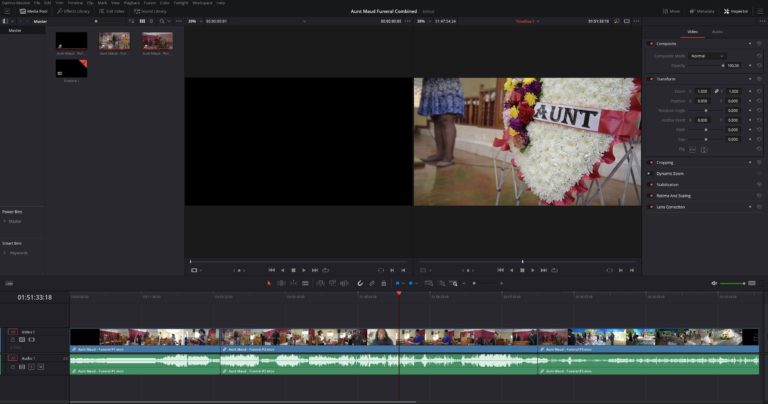
DaVinci Resolve Edit Screen
All in all, it was a good experience and another level of growth for me. I have already enrolled in a course on lynda.com to get a better handle on DaVinci Resolve so I can become more proficient in using the application.
Did Covid-19 kick you out of your comfort zone too? What new thing(s) did you learn
Source: DWAYNE K. SMITH PHOTOGRAPHY
Author: Dwayne K. Smith
Dwayne is a multi-genre photographer who lives and exercises his craft in the beautiful island of Jamaica. His approach of being an explorer of the various photographic arts helps to mold his personal style.
See more of Dwayne’s work in Portraiture, Events, Nature, Landscapes, Weddings, Astroscapes, Timelapses, Food Automobile Real Estates and Interiors by visiting Dwayne’s website to see more of his pictures : https://bit.ly/3zqEeuF
Blog Originally posted here: https://bit.ly/3ywJlIQ
DWAYNE K. SMITH PHOTOGRAPHY
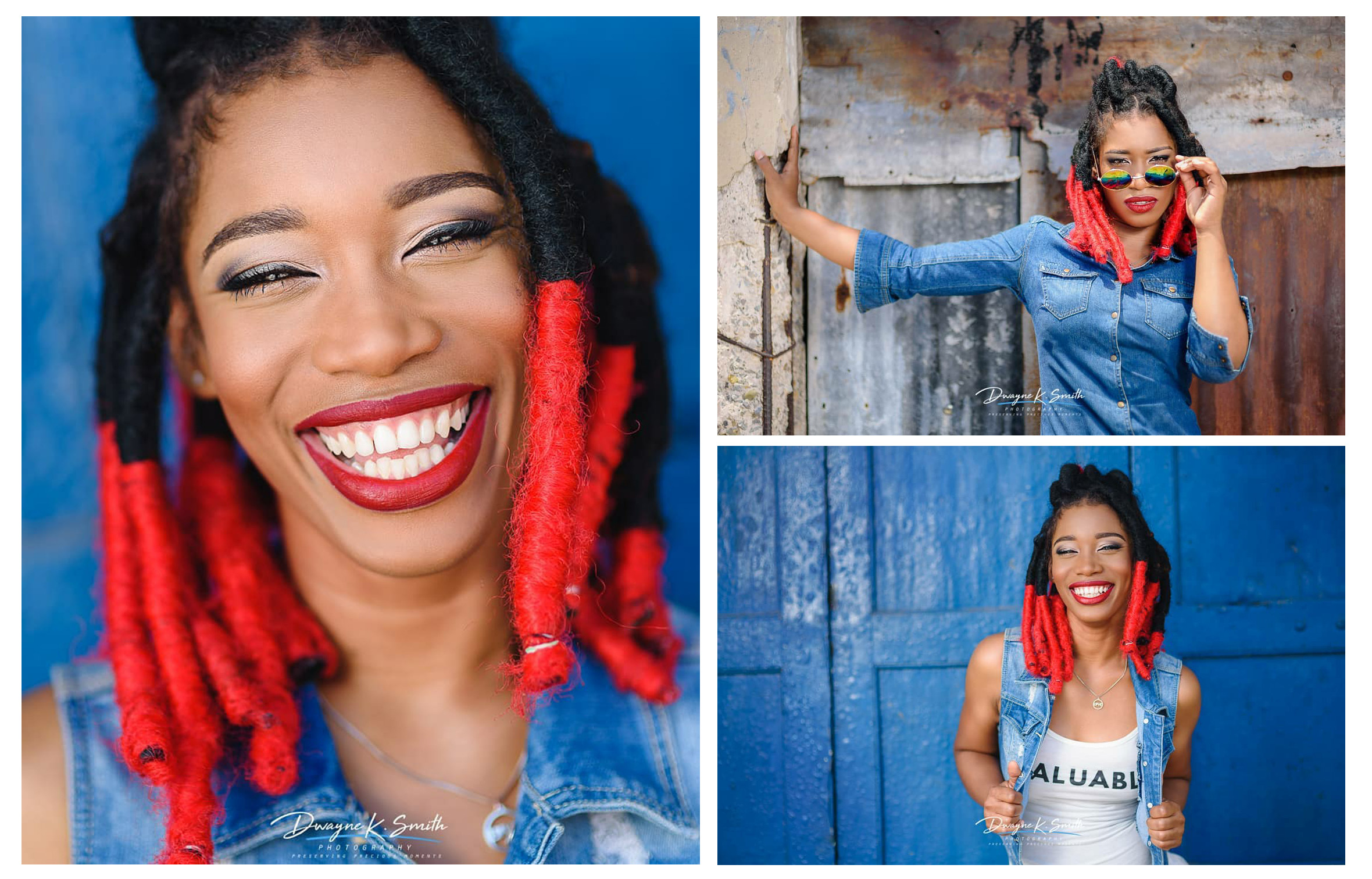
Creative Tech Lab 2.0 Births Innovative Business Ideas from Jamaica
Creative Tech Lab 2.0 Births Innovative Business Ideas from Jamaica
The Creative Technology Lab (CTL) 2023, an innovative initiative uniting creative minds and tech enthusiasts, has concluded its journey, marking the culmination of weeks filled with collaborative energy, hard work and creativity. Spanning across Jamaica and Honduras, and funded by the Inter American Development Bank (IDB), this event was a testament to the extraordinary potential of combining creativity and technology in the region and how nations can collaborate beyond the boundaries of borders and language.
Participants in Jamaica worked with the Kingston Creative team and in Honduras with the team at the Universidad Tecnologica de Honduras, while the overall programme was guided by Banj, a Haiti-based Tech Hub. Throughout the journey, the participants embarked on an enriching experience, delving deep into intensive learning sessions, gaining invaluable expertise, and engaging with regional industry experts. This immersive exploration not only honed their skills but also developed new business ideas.
The event closed with a Pitch Day hosted by the Kingston Creative Hub in Downtown Kingston. The participants unveiled their visionary projects before a panel of investors, industry experts and 500 online viewers on Facebook Live.
A distinctive feature of CTL 2023 was its hybrid approach, utilising cutting-edge technology to transcend geographical barriers between Jamaica, Haiti and Honduras. Through virtual collaboration tools and live streaming, participants and audiences were seamlessly linked, fostering collaboration and innovation despite the physical distance.
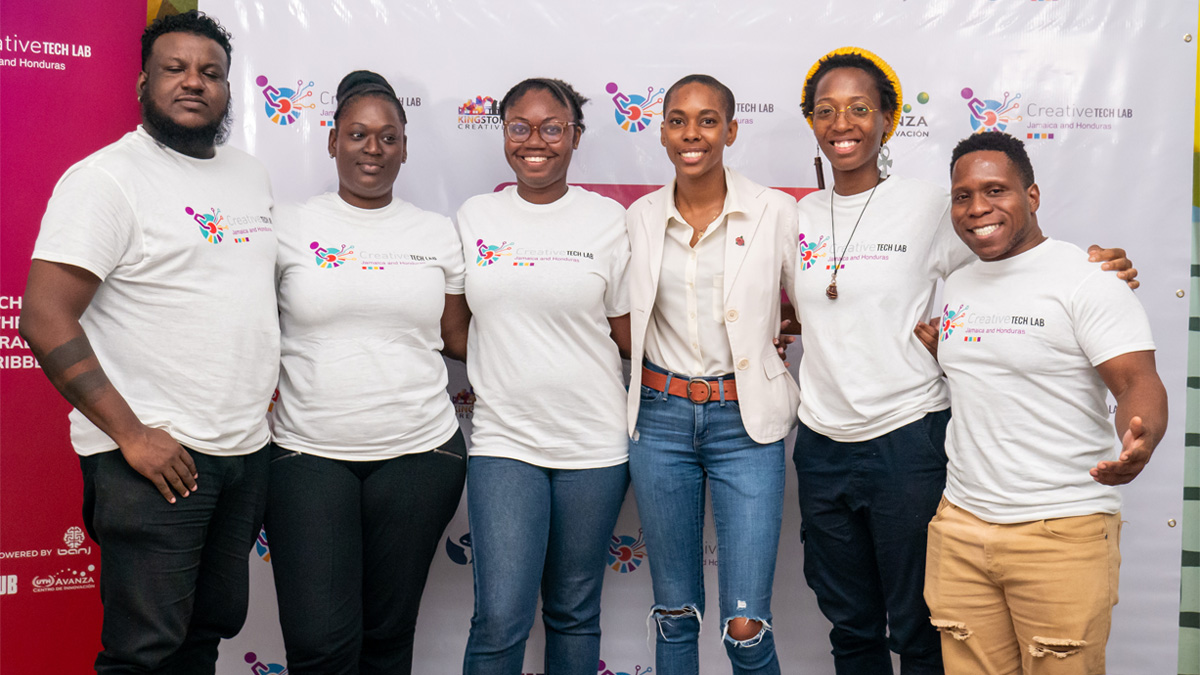
Two standout projects emerged from this talented cohort from Jamaica:
Eventide™: This cutting-edge software revolutionises event graphic design and marketing. Eventide™ offers intelligent templates, AI-driven design insights, cost estimation, collaboration tools, automated marketing, and performance analytics. By streamlining design processes, Eventide™ not only saves time and enhances creativity but also maximises budget efficiency, transforming event planning and marketing strategies.
Innersight: A Web Portal meticulously gathering qualitative text and voice data for creative arts program testimonials. Powered by transcriptors, this data fuels a dashboard showcasing social impact metrics. Innersight’s vision bridges the gap between creativity and social impact, providing a holistic view of the transformative power of the arts.
The conclusion of CTL 2023 marks not just the end of a regional hackathon event but the emergence of promising business ventures which can be incubated through Kingston Creatives Incubator, Accelerator, Best Pitch Forward, Business Registration and other programmes designed to empower creative entrepreneurs and drive growth in the Cultural and Creative Industries. Hackathons are essential features of the ecosystem, nurturing future innovators and fostering a culture of collaboration in the creative economies of Central America and the Caribbean. All the participants have received an exclusive invitation to use business services at the Hub and join the Kingston Creative Incubator Programme, which will further guide their projects and entrepreneurial pursuits.
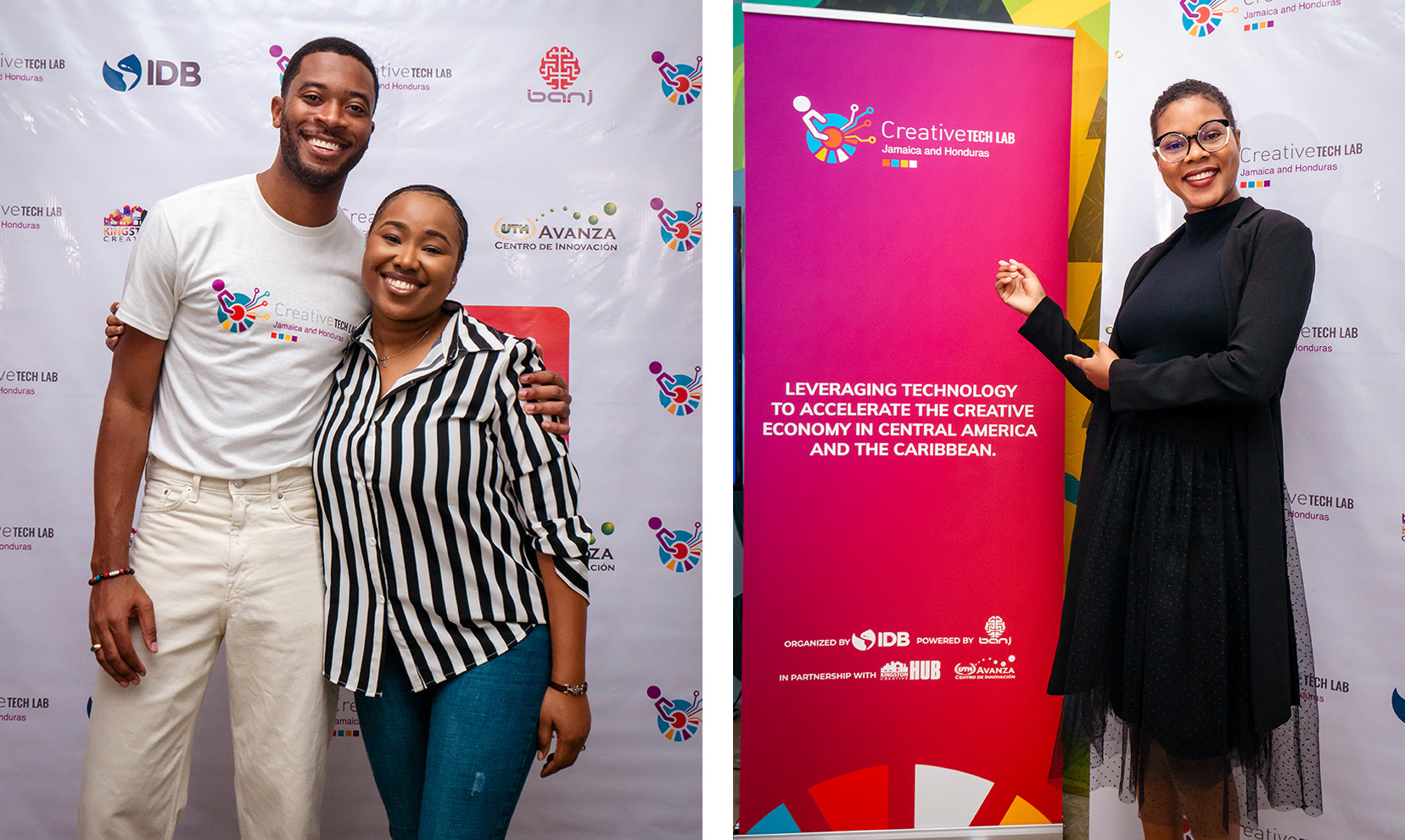
Culture as Resistance: Reflections on Seven Years of Kingston Creative
Reclaiming physical space is resistance. Challenging the status quo is resistance. Defining Arts and Culture as a driver of social and economic transformation is resistance. Putting artists and cultural workers in a position of prominence and status in our society is resistance. Intentionally betting on what is most powerful about us as a country – OUR CULTURE – even though it arguably is created by who we consider to be from the working classes of society – is resistance. Deciding to change our city, our economy and empower our most culturally vibrant communities – is resistance. Imagining a new future together, and taking action together from the ground up, not the top down to realize this new future – this is an act of resistance.

If you ask me on any given day whether I’m “into” politics, I, like many creatives, would say that I am not political. Our politics is framed in a limiting way, as it forces us to think about development in choppy 4-year cycles instead of the 25- and 50-year strategic cycles that lead to real transformation and sustainable national development. To be creative, one must be in a certain state of mind and often I find that it is necessary to block out the partisan chatter that we all too often find ourselves embroiled in as a society.
But “politics”, from the Greek word “politika”, is defined simply as “affairs of the cities”. In a very literal sense, politics is just the set of activities associated with making decisions in groups and managing the power relations among individuals. The Irish political scientist Michael Laver, put it this way:
“Politics is about the characteristic blend of conflict and co-operation that can be found so often in human interactions. Pure conflict is war. Pure co-operation is true love. Politics is a mixture of both. “
If I were to abide by the true definition of politics, then the work that we at Kingston Creative are engaged in is very political. Artists and creatives are actively changing the affairs of the city with every mural, every film, every book and every cultural tour.
Kingston Creative is a movement that came into being 7 years ago almost to the day, so let me say first Happy 7th Anniversary to the entire Kingston Creative family. I vividly remember being upstairs in the attic in my home in London, making that call to my cofounder Allan Daisley who was in Miami. My hand was shaking, and I was absolutely full of trepidation. This vision was so big, and I just didn’t want to sound unhinged. I didn’t even want to speak it out loud, but it was so urgent that I felt that I would burst if I didn’t.
Even as a possibility thinker and an eternal optimist, I know how the world works. I am a dark-skinned black person, I am a woman, one with an unremarkable last name at that and no generational wealth to fund a massive vision, so who were we to think that we could really shift the affairs of the city?
But we stepped out in faith and developed our 10-year plan with David Mullings and Jennifer Bailey. I moved back home to Jamaica, and we took a small another step forward, first presenting the concept at UWI’s Imagine Kingston conference in 2017. We formed a core team with Doris Gross and Dr. Kim Marie Spence. Very rapidly, a group of 100 volunteers and creatives came on board, who all played a critical role in hosting Artwalk festivals and monthly meetups, painting murals and driving this vision forward.
We registered a nonprofit company in 2019, then a charity organization, and were able to raise money to fund operations. This would not have happened without the support of who we term the First 50 Founders, individuals and companies that donate one million a year because they want to be a part of the transformation of Downtown and the economic growth that they believe creative entrepreneurs and the Orange Economy can deliver.
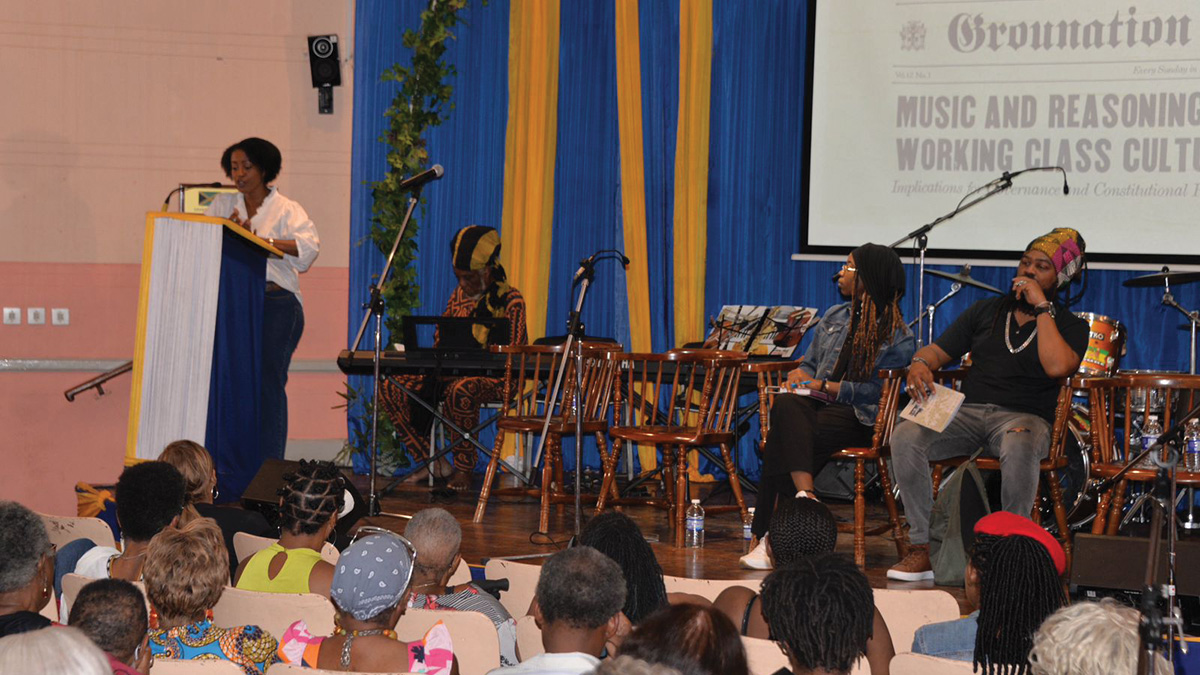
Since 2017, we have painted 101 murals, opened a Downtown coworking space, launched the Artwalk -a monthly public arts festival and created a cultural tourism destination in Water Lane that is now listed on Tripadvisor. This street art pathway connects the Institute of Jamaica museums on East Street with the National Gallery of Jamaica on Orange Street, and the talent of these artists has brought many visitors into this part of the city. Our main partners in these developments are the Tourism Enhancement Fund (TEF), Sherwin Williams, the KSAMC, the Development Bank of Jamaica (DBJ), the CB Facey Foundation, and the Kingston Restoration Company (KRC), but it is important to note that none of this would have started without the time and money contributed by ordinary Jamaicans, both here and in the Diaspora.
Ours is a vision of “people and place” and with partners including IDB Lab, DBJ, PIOJ, JAMPRO, HEART and Sagicor we invest heavily in developing creative people. We have delivered over 5,500 free training opportunities, enabled 9 artists to go overseas on travel grants, developed an ecommerce platform called Kulcha Connect, developed an online directory of creatives called Caribbean Creative Network where the world can now find over 409 creatives – and hire them. We have hosted four editions of Best Pitch forward, the first pitch competition exclusively for Jamaican creatives where $2.2 million in seed capital has been granted to creative entrepreneurs.
Formalization is critical to the development of the ecosystem, and Kingston Creative, with the support of IDB, JIPO and Companies Office of Jamaica, has helped 104 creative entrepreneurs to register their businesses and intellectual property. We conceptualized a regional programme called CATAPULT (www.catapultsarts.org) which gave support and grants of $73 million JMD to 1,535 creatives from 27 Caribbean countries during the COVID-19 years, when artists around the region were at their most vulnerable. This we accomplished with a tiny 4 person team and by partnering with Open Societies Foundation, American Friends of Jamaica and Barbados-based nonprofit, Fresh Milk.
We have engaged with 20 Downtown Communities and 8 Downtown Kingston community tourism locations have been supported by the tours that we offer. Most of all, we have made a small dent in shifting the public perception of Downtown Kingston, along with our media partners the Jamaica Gleaner and the Jamaica Observer – both of whom are fully committed to turning around the old city and reducing the stigma.
If there are any secrets to our success, the first is, without question, people. We have a committed, talented team, an amazing Board, and many advisors and truth tellers that keep us on the right track. We also have visionary partners and advocates within the private and public sector and multilateral sphere, not least of all the Ministry of Culture and its agencies like the Institute of Jamaica and the Jamaica Music Museum – we are thankful for all the great people that work there.
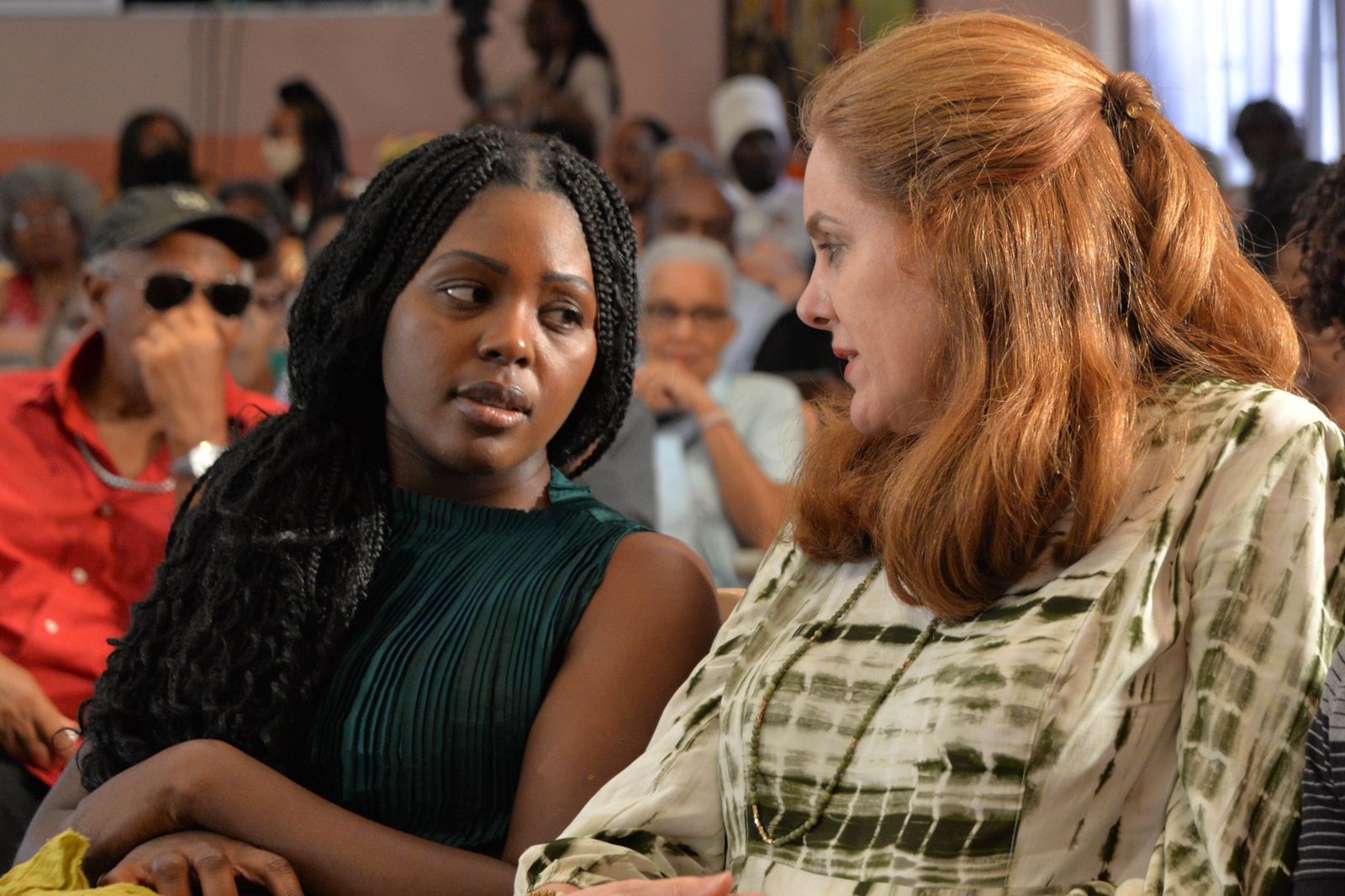
Our second secret is imagination. We give ourselves the room to imagine a positive, creative future for Jamaica. We balance that big imagination with practicality and persistence.
Our third secret is small consistent action. The movement is not known for flashy pronouncements and massive projects, but we come together to take tiny actions, sometimes imperceptible baby steps to get us closer to that future that we imagined. We stay centred by never forgetting our mission of empowering creative people, so that they can succeed, gain access to global markets, and create wealth for themselves and their communities. We hold as a beacon to inspire us, our vision of Kingston as the Creative Capital of the Caribbean. We always know who we serve – a community of creatives and the beautiful old city of Downtown Kingston.
Often, I am asked, where did all this come from? The story starts in Glasgow Scotland, where I was born to a Trinidadian mother and a Jamaican father in the era of Black power, surrounded by Caribbean people and some legendary parties where the music of Bob Marley played late into the night. I lived with my grandparents there in the 80’s, who took me to bookstores, where I spent hours just sitting on the carpet luxuriating in books which are still my first love, with visual arts, drawing and painting as a very close second. I grew up walking to school and roaming the streets freely in a safe city. We frequented the art galleries and museums, and it was normal to see free public art in theatres, public spaces, parks and gardens, where friends played, families met and memories were made.
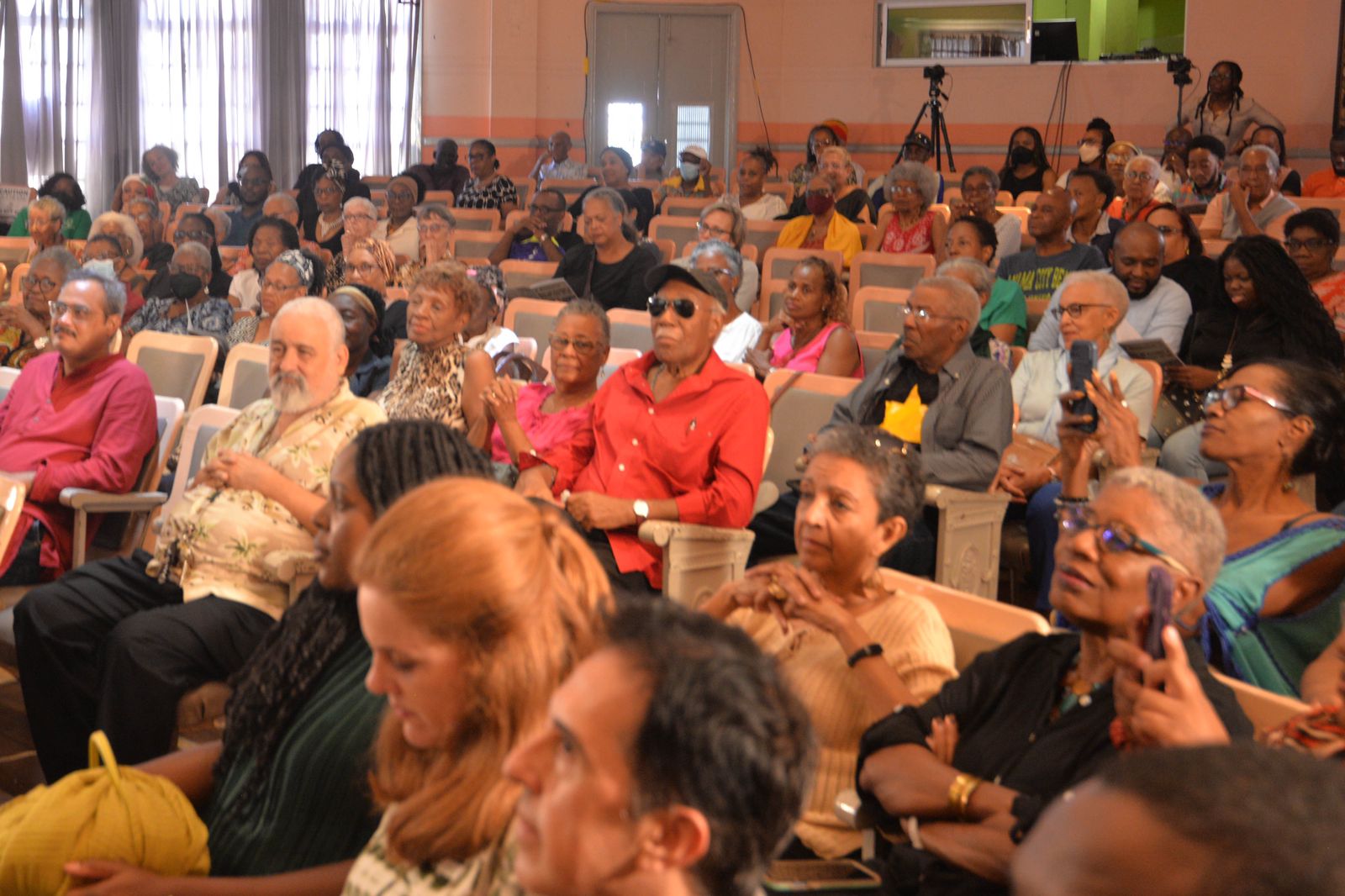
The second chapter of the story moves to the USA, where I became a licensed professional structural engineer working on multimillion dollar city redevelopment and historical preservation projects in Washington DC. I worked my early years in Miami, in the Design District, on 2nd Avenue, near Little Haiti, where now a famous Art District called Wynwood stands, and the change is incredible to have witnessed. There is also some valuable Jamaican public sector experience, the years when I was the Director of Technical Services in the Ministry of Water and Housing, responsible for over 90 joint-venture housing developments across the island and the squatter management programme, which took me into some very depressed communities in Montego Bay and of course Downtown Kingston. I have worked in private sector corporations like Gracekennedy and Digicel, both Downtown-based companies, where skills in strategy, projects and managing multimillion dollar USD budgets were honed. Finally, I am an entrepreneur coming from a long line of entrepreneurs starting with my Grandma in Falmouth (Big up to Miss Richie!) and I started Bookophilia in 2008, a bookstore and café on Hope Road where I started to really understand the needs of the creative community and where Kei Miller, Marlon James and Anthony Winkler read, and where a young Protoje, Jah 9 and Kabaka Pyramid would have all performed.
The idea for Kingston Creative came from these diverse experiences, and it is fueled by the collective passion that every other single person in the movement has for this cause. And now, in year 7, in abandoned spaces and the neglected back lanes of Downtown Kingston, we see a real Art District emerging. Upstairs in Swiss Stores, above the F&B Downtown restaurant, we have building a creative hub coworking space – a Home for creative entrepreneurs, where they can have the space, training, investment, funding, recognition and the respect that they need to succeed.
The approach of using Art for Social and Economic transformation is not unique. Street artists have changed neighbourhoods and governments have invested in the Orange Economy and cultural tourism and reaped the benefits before. Other cities have invested in building the infrastructure, supported placemaking projects and invested in revitalization. This is nothing new – but it is a proven strategy that works. If we can apply it here in Jamaica, it can have a number of critical benefits:
- It can uplift artists and artisans from inner city communities, not just in Downtown but in similar communities across the island.
- It can diversify our economy through growing the Cultural and Creative Industries like film, fashion, culinary arts, dance, literature, and music.
- It can make our tourism product more resilient – cultural tourism is a viable and lucrative addition to the offering of sun, sea and sand.
- It can instill new pride in the parts of ourselves and our capital city that we try to hide.
- It can employ young people, offering a viable alternative for them to gangs, violence and scamming.
Kingston Creative deals with issues of grassroots empowerment and use of public space, which is disruptive. It challenges colonial mindsets and notions of ownership and frankly speaking, these structures just aren’t challenged enough in our society. In the Arts, gatekeeping was the norm, where a select few can determine which artist is worthy of accolades and which might be permitted entry into elite gallery spaces, and which might earn. But when the gallery becomes the street, young unknown artists are selected through an open call, and then these young artists are hired, just on the basis of their work, not the validation of gatekeepers – and they are paid millions for their talent. This is resistance.
In closing I want you to close your eyes and imagine with me for a second. Imagine if we had a legal and governance framework that really facilitated the success of our creative people, and that promoted the status of the artists, and the growth of the Orange Economy. Imagine that we had a policy, plan and funding for the development of cultural spaces across the island, rules that ensured that our built heritage can’t be knocked down by private interests, and that we encouraged the transformation of privately held, under-utilized spaces into viable creative spaces.
Imagine further that it was a national priority to build fit for purpose creative spaces, theatres, museums, new galleries and state of the art festival spaces. Imagine millions of people coming to our island to appreciate reggae and other cultural offerings. What if we provided the necessary makerspaces, studios and creative spaces for both the production and consumption of the arts?
What if we advocated for the access that creatives need; access to visas, ease of movement and travel, and challenged the geo-restrictions, so that our artists had full access to the technology and digital tools that they need to compete globally.
What if creative careers and creative education was a year-round priority and that pesky “A” in STEAM was consistently present, and the school kids that are the dancers, actors, singers, songwriters, musicians and poets, didn’t feel like outcasts. Imagine if these talented kids knew that there was an ecosystem to ensure their success in Jamaica, just knew that they could… like anyone else… work hard at their craft, buy a house, educate their kids, have full retirement funds, health and life insurance and if god forbid, they did fall ill, that their family could deal with it in a dignified manner without handouts and charity.
Imagine or just a second, what would happen if our young artists, especially those from inner city communities, knew that they were valued and that there was a real place in society for them, that they didn’t have to migrate, and that we valued them and that as a country, we were strategically organized to promote their success.
I often ask myself, where would we be as a country if we really believed in ourselves and in our cultural supremacy (which is so obvious to the rest of the world) and not only believed, but followed through in a structured, practical way. Where would we be today, if instead of simply singing along to “One Love”, we embedded the necessary guiding principles, policies and legal frameworks for development of the Cultural and Creative Industries and real transformation for us as a nation.
Thank you for imagining with me. This small act of imagination and action – this is resistance.
Do You Really Know My Steez? The Journey of an Artist (and a Genre) in Jamaica – Five Steez
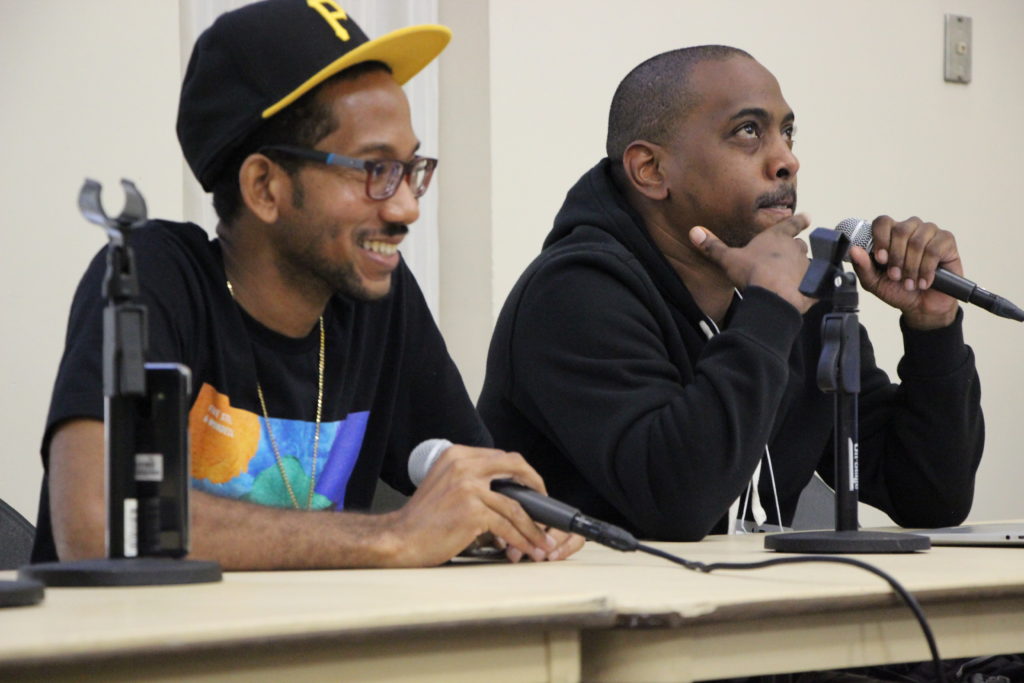
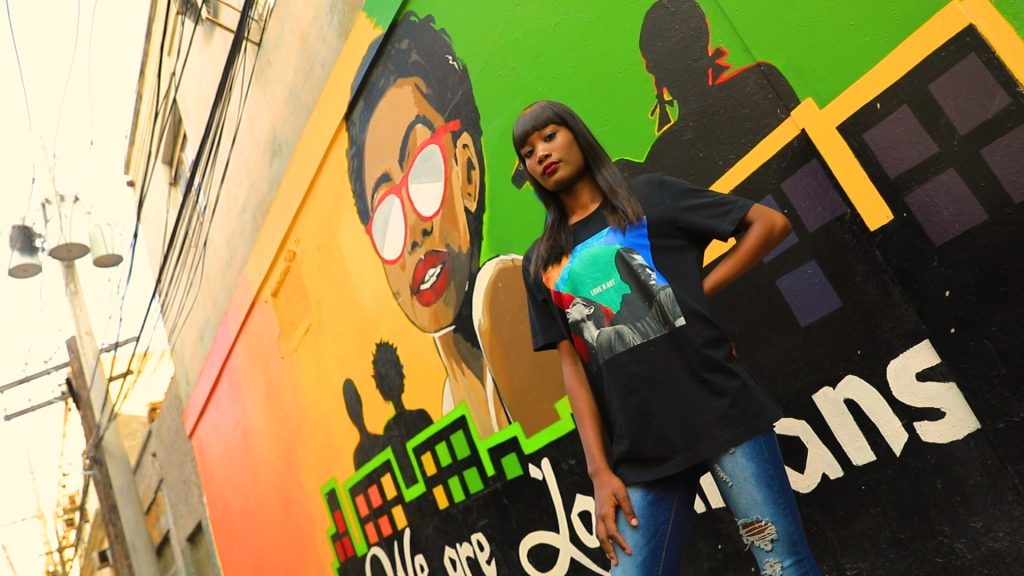
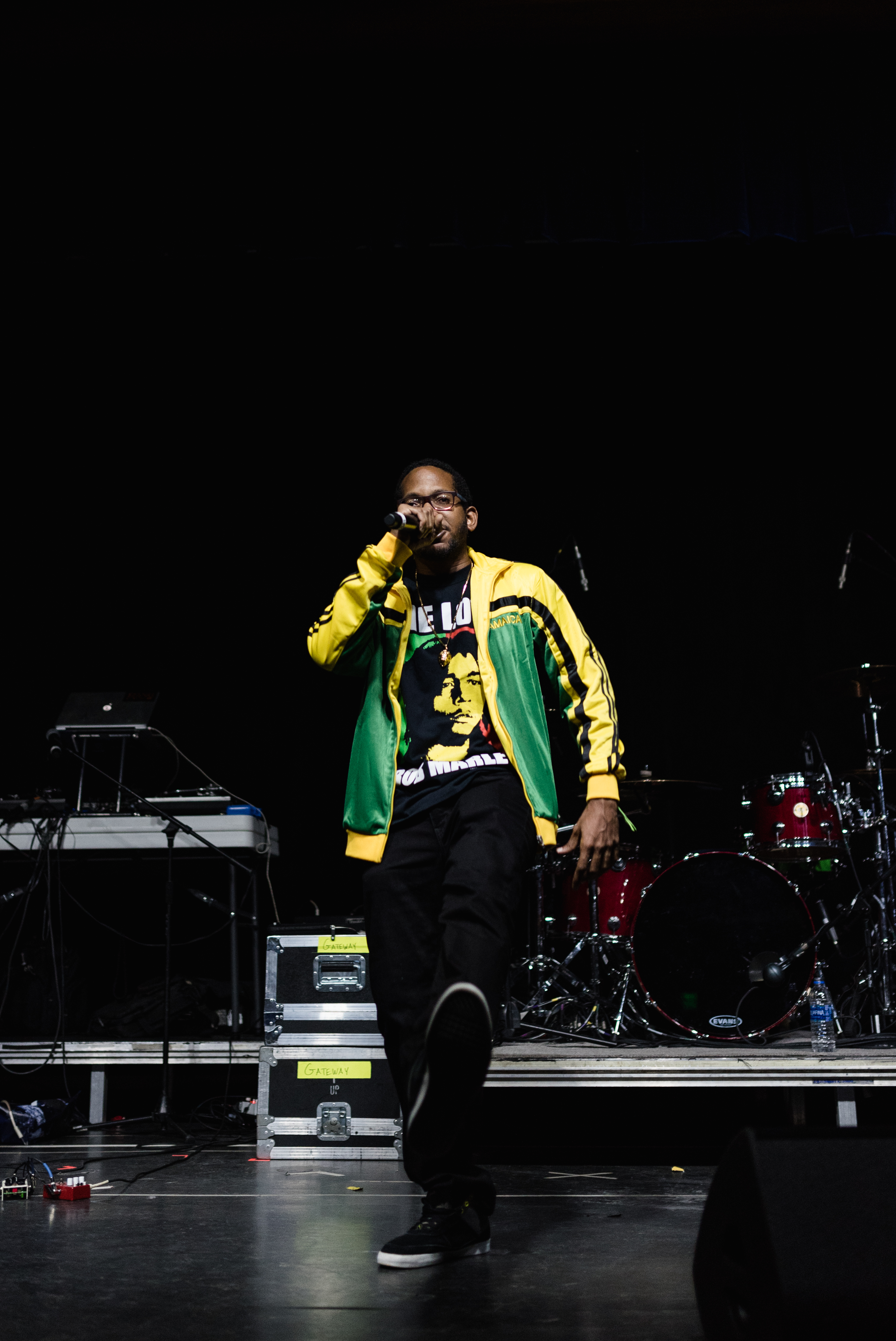
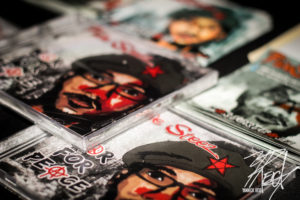 First Coast -The Jamaican and wider Caribbean involvement in Hip Hop
First Coast -The Jamaican and wider Caribbean involvement in Hip Hop
Embracing the Feral in the Concrete Jungle of Kingston
“Embracing the Feral in the Concrete Jungle of Kingston”
Isis Semaj-Hall
As a Jamaican writer-scholar, I am inclined to begin a discussion of Chain of Love: Rice and Peas Bush in Lower South Camp (2024), an ecological public artwork by visual artist Camille Chedda when and where Jamaican theorist Sylvia Wynter[1] begins 530 years ago, in May of 1494 when the Tainos of Yamaye discovered Columbus and his men offshore in strange cloud-tipped canoes. This land’s first people could never have imagined the imposition and exploitation that was to come. They could not have anticipated the planting of flags – first Spanish, then British; nor could they have foreseen diasporas of people forced from Africa and lured from Asia. The fruits, flowers, and fronds stowed on European-commissioned Jamaica-bound ships from Africa and Asia, all for the sake of feeding colonial husbandry, could not have been predicted as the Tainos gazed out on the not-yet-warmer and not-yet-polluted waters of their island home that was not-yet-losing landmass under climate change’s sea-level rise.
Why examine a 21st-century art installation through a 15th-century perspective? I begin here because centuries of abuse, exploitation, and neglect continue to impact us and our environment today. But through new and meaningful partnerships, there is a way for us to survive and bloom anew. Through the arts and culture nonprofit organisation Kingston Creative’s[2] participation in the Global Co-commission,[3] an international initiative foregrounding subaltern community knowledge, contextualising the global climate crisis, and driving collective action in public art in urban spaces, Chedda’s Chain of Love installation can plant seeds of community-building possibilities.
The title and theme of the Global Co-commission is A Feral Commons, which refers to the co-dependences and collaborations between humans, plants, animals, and water. What history does the word “feral” hold for a postcolonial place like Jamaica? For many, it recalls those Africans who were freed and who freed themselves to the hinterlands of this island. The Spanish called them “cimarrónes” because these formerly enslaved people were deemed “wild” and feral for stealing off to live free in the island’s densely forested, mountainous, bio-diverse, and colonially inaccessible interior. But Jamaica’s cimarrónes, later anglicized as Maroons, survived because of their knowledge of their environment and their ability to coexist with nature.
I begin with this historical grounding because today, in the legacy of colonialism, plantation devastation, industrial/ technological/ and digital revolutions, and a worsening climate crisis that will unevenly impact small island states like Jamaica, we, like the Tainos, are facing the possibility of annihilation. Just as it was for the Maroons in the 16th century, today, our future as Kingstonians depends on our ability to work with nature. Our chances of climate survival in this urban space depend on the actions we take now to shift away from the abuse of nature and towards building a respectful and reciprocal relationship with our natural environment.
In 2015, Kingston became a UNESCO-designated creative city of music. Decades before, the world came to know Downtown Kingston through the voice and lyrics of Bob Marley of The Wailers, who sang out in 1973 that this place is a hard and difficult “concrete jungle” where few can survive.[1] In a way, Chedda extends the possibilities of the “concrete jungle” through her vision to reinvigorate a community park at Tower Street and South Camp Road. In partnership with Kingston Creative, residents of the community, and local government representatives, Chedda’s vision for an equitable and beautiful multi-species community space blossomed. But true to Kingston’s “concrete jungle” reality, the road to fruition was hard and hot.
This park’s community has seen an unfair share of violence. Meetings with residents were sometimes difficult as people had concerns for their safety. The park needed repairs that could only be completed by elected officials, so when local elections were held during the park’s rehabilitation, the change in representation meant unavoidable delays. Still committed to the community and the project, Chedda persisted and forged relationships with the men, women, and children she met in and around the park. She came to know residents like the community gardener Mr. Peary, the cookshop-keeper Miss Madge, and the well-respected and well-loved Mas Joe (Joseph Manning).
For many in the community, Mas Joe was synonymous with the park. Chedda learned that he planned the park decades ago, and he installed the ironwork that borders the space. On any given day, he could be found there with a warm smile and a gentle spirit. So, when Mas Joe passed away suddenly and unexpectedly on Easter Weekend 2024, during the planning and installation process for Chain of Love, sadness swept over everyone in the space and people working on the project. With this heavy loss, Chedda’s artistic vision had a chance to prove its restorative power. Even before the project was complete, it provided a space of solace and comfort. Her installation of a metal-arch-topped cement structure was designed to give the wild Rice and Peas bush (Antigonon leptopus) a way to climb overhead. It also functions as shaded seating for park-goers to look at photographs of people in the community who worked together to create this “feral commons.” Under the metal-meets-plant archway, the cement base blocks frame what are now deeply sentimental images of Mas Joe’s last days. Because of his role in the park’s original development, Chedda planned to include his likeness in a mural panel, but with his passing, her painting of him evolved to honour his legacy in the community. Sitting in or walking through the commons, the mural depicting Mas Joe’s warm eyes and smiling face can be seen and felt.
Alongside Mas Joe, Miss Madge’s cookshop is also featured in one of the many murals painted by Chedda and a group of volunteer artists from the community. Large images of residents’ dogs, cats, birds, and a very large rooster are brightly painted on the commons’ back wall. Depictions of children and adults resting on blankets and benches invite passersby to do the same. Connecting the mural’s panels are paintings of the pink-flowering vines of the Rice and Peas bush. As a common fast-growing plant on the island, the Rice and Peas bush had taken over this downtown park during its years of disuse. Pretty but not ornamental, Jamaican gardeners tend not to invite Rice and Peas bushes into their botanical spaces. But this feral plant has both nutritional value (the edible seeds are used as a substitute for making the eponymously named dish Rice and Peas) and medicinal value (the leaves are brewed for tea to relieve cold symptoms and menstrual cramps). Rather than remove the bush and the ecosystem it supports (bees, in particular), Chedda left much of it untouched. While the northern area has been de-bushed to accommodate people and an herb garden, the commons’ southern area remains fully feral. The Hope Royal Botanic Gardens and the Forestry Department donated mint and basil plants, as well as flowering bougainvillea and plumbago plants to line the commons’ footpaths.
Where once there was a park that had fallen into wild disrepair, now thrives an active public space revived by art. In this community park, neighbours now gather in the shade to reflect, and when needed, they can nourish and heal themselves with medical and edible plants that flourish in the space. With climate concerns graduating to climate crisis realities, this ecological public artwork invites the community to return to the land, to their roots for sustenance. In this “feral commons” new seeds of climate resilience have been planted. Environmental caretaking now rests in the able hands of the community, just as it did long ago. To survive, people and plants must coexist in the concrete jungle that is Kingston.
___________________________________________________________________
[1] Here I refer to Sylvia Wynter’s book chapter: “1492: A New World View,” Race, Discourse, and the Origin of the Americas: A New World View. Editors Vera Lawrence Hyatt and Rex Nettleford. Smithsonian Institution Press, 1995, pp. 5 -57.
[2] Kingston Creative was founded in 2017 to nurture and support the creative ecosystem of Downtown Kingston. For more information, visit https://kingstoncreative.org/ourstory/.
[3] A Feral Commons is the central theme of the Global Co-Commission, an initiative by Alserkal Advisory in partnership with the Global Cultural Districts Network and supported by Urban Art Projects, please visit https://aferalcommons.com/the-global-co-commission-2/.
[4] See Orlando Patterson’s article: “Slavery And Slave Revolts: A Socio-Historical Analysis Of The First Maroon War Jamaica, 1655 – 1740.” Social and Economic Studies, vol. 19, no. 3, 1970, pp. 289–325.
[5] As sung by The Wailers on the reggae classic “Concrete Jungle” (1973, Island Records, UK).



